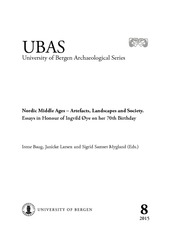‘svá kona sem karlmaðr.’ Women in Old Norse Society
Chapter, Peer reviewed
Published version
Permanent lenke
https://hdl.handle.net/1956/15395Utgivelsesdato
2015Metadata
Vis full innførselSamlinger
Originalversjon
In: Irene Baug, Janicke Larsen and Sigrid Samset Mygland (Eds.), Nordic Middle Ages - Artefacts, Landscapes and Society. Essays in Honour of Ingvild Øye on her 70th Birthday, p 227-239, UBAS - University of Bergen Archaeological Series; 8.Sammendrag
Women in Old Norse society were far from having equal rights with men. According both to Norwegian and Icelandic laws, daughters would inherit half as much as sons from their parents; if husband and wife had co-ownership, he would own two thirds of their property, she one third; and married women could only use a limited sum of money without her husband’s agreement; a woman could not, with the exception of widows, choose the man she wanted to marry. Many further examples could be mentioned. On the other hand, there is no doubt that women were liable for their actions in the same way as men. In Norway, where the fully free population was divided by law into different social groups with different legal rights, a man’s wife and a man’s daughter would have the same legal status as husband and father respectively, meaning that they would be entitled to the same compensation as the male members of the family were a crime committed against them. It is, however, obvious that men played the main role in public life, a role from which women, according to Icelandic laws, may have even been formally excluded. Women had a stronger position at home, or innanstokks ‘inside the threshold/house’. An interesting question is whether women’s position at home and in the family formed a basis from which women could influence public life to a greater degree than normally assumed.

